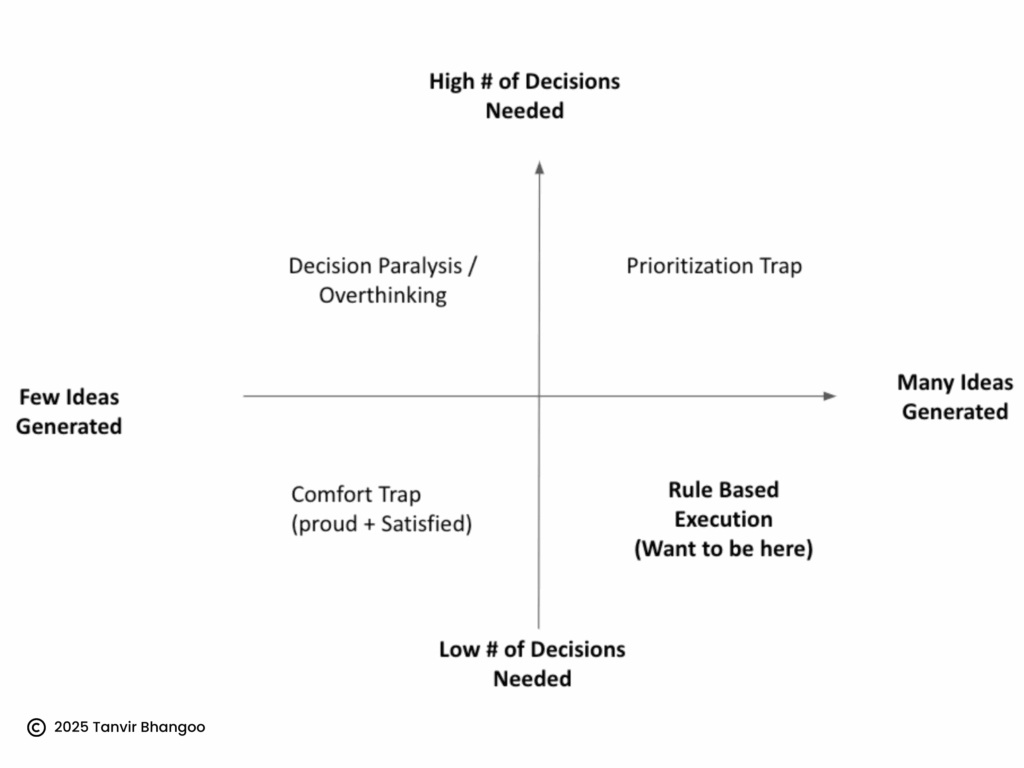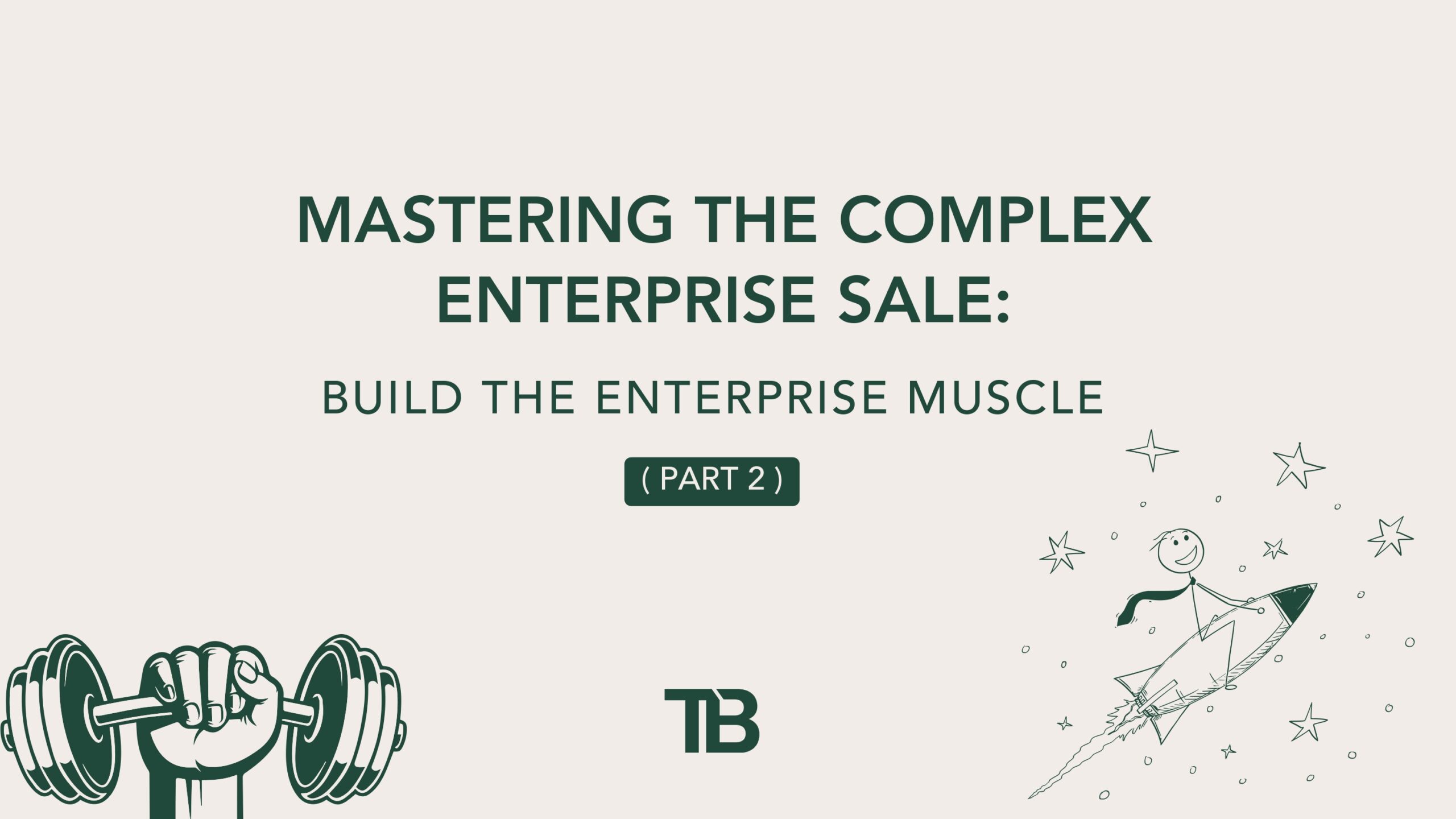In this newsletter, I break down the 3 critical muscles every tech company needs to scale upmarket. Plus, I share 15 tactical tips to help you navigate enterprise sales with more speed, clarity, and confidence.
The Solution: Build the Enterprise Muscle
Enterprise success starts with a strong foundation. Here’s a high-level three-part framework:
1. P&L-Focused Strategy
A successful enterprise play requires a long-term outlook with clear financial modeling.
Key Questions to Ask:
- What are the key unit economics (gross margins, CAC, LTV, etc.) for this industry?
- Is the TAM large enough to build a profitable, sustainable business?
- What’s our forecasted P&L in best, base, and worst-case scenarios?
- What investments do we need in product, people, and GTM to achieve scale?
- To build a $500M enterprise business, how many accounts do we need to win?
Output: A clear financial roadmap, stress-tested for long-term success.
2. Align Product to GTM Motion
Enterprise success depends on product-market fit and a structured go-to-market strategy.
Key Questions to Ask:
- What is our unifying goal—ARR, logo acquisition, recurring margin growth?
- Who are our competitors (startups, legacy vendors, homegrown solutions)?
- How do we differentiate across the entire customer journey?
- What pricing model creates a win-win for both us and the customer?
- Who do we say no to? What custom work are we willing to do (or not do)?
Output: A tightly aligned product and sales strategy that maximizes deal success.
Bonus: Use a Decision vs. Idea Framework—increase great ideas but implement clear decision-making rules to stay on track.

Here is a decision vs idea framework that I use during this stage with clients.
The key thing to note here is that you want to increase the number of great ideas when it comes to taking your product to market, or new features, or new customer verticals. But you also need to have clear rules that allow you to make those decisions quickly and efficiently, without derailing your long-term plans.
3. Build the Right Teams to Support Complex Deals
Enterprise sales is a team sport. Success requires cross-functional alignment across sales, product, onboarding, and customer success.
Key Considerations:
- What resources do we need for sales, onboarding, and renewals?
- Can our teams support enterprise expectations today? If not, what’s missing?
- Do we have the right communication and operational cadence?
- What legal and compliance hurdles do we need to anticipate?
Output: A customer-focused organization that instills confidence and reduces friction for enterprise buyers.
15 Tactical Tips for Navigating Enterprise Sales
Once your foundation is in place, here are 15 best practices for enterprise sales execution:
- Leverage cross-functional teams – Enterprise sales requires internal alignment across functions.
- Sell outcomes, not features – Focus on revenue growth, retention, and efficiency gains, not just your product’s bells and whistles.
- Set realistic expectations – Enterprise sales cycles take 12-18 months—plan accordingly.
- Be selective – Decide upfront which customers you’ll pursue (and which you won’t).
- Quality over quantity – Focus on a high-quality pipeline rather than chasing too many leads.
- Act as an advisor, not just a seller – Help prospects solve real problems instead of pushing to hit quarterly quotas.
- Involve product leadership early – Their insights and creativity strengthens the deal.
- Use a multi-threaded sales approach – Engage multiple stakeholders within your target accounts.
- Executive relationships matter – As CEO or GM, build direct relationships with buyer executives.
- Understand how customers make decisions – Titles can be misleading; identify the true economic buyer.
- Think Beyond Features – Solve the real problem creatively instead of defaulting to new feature requests.
- Slow Down to Speed Up – Invest time upfront to ensure smooth onboarding and long-term success.
- Prove ROI & TCO – Justify costs with clear business value to secure commitment.
- Get Ahead of Red Tape – Involve legal early to streamline contracts and avoid delays.
- Expand Beyond the Win – Treat the deal as a starting point; grow the account post-sale.
Final Thought: Complexity Becomes Simplicity with the Right Foundations
Enterprise sales isn’t about managing complexity—it’s about reducing it by setting up the right strategy, alignment, and execution muscle upfront. When done right, complexity becomes a structured, repeatable process that drives sustainable growth.
By focusing on long-term enterprise strategy, aligning product with GTM, and building the right teams, you’ll set your company up to win in the enterprise space—not just today, but for the long haul.

 Mastering the Complex Enterprise Sale: Build the Enterprise Muscle
Mastering the Complex Enterprise Sale: Build the Enterprise Muscle